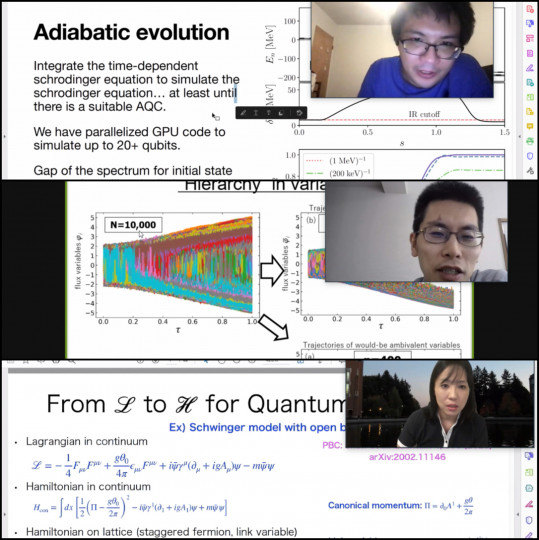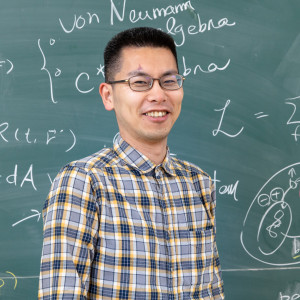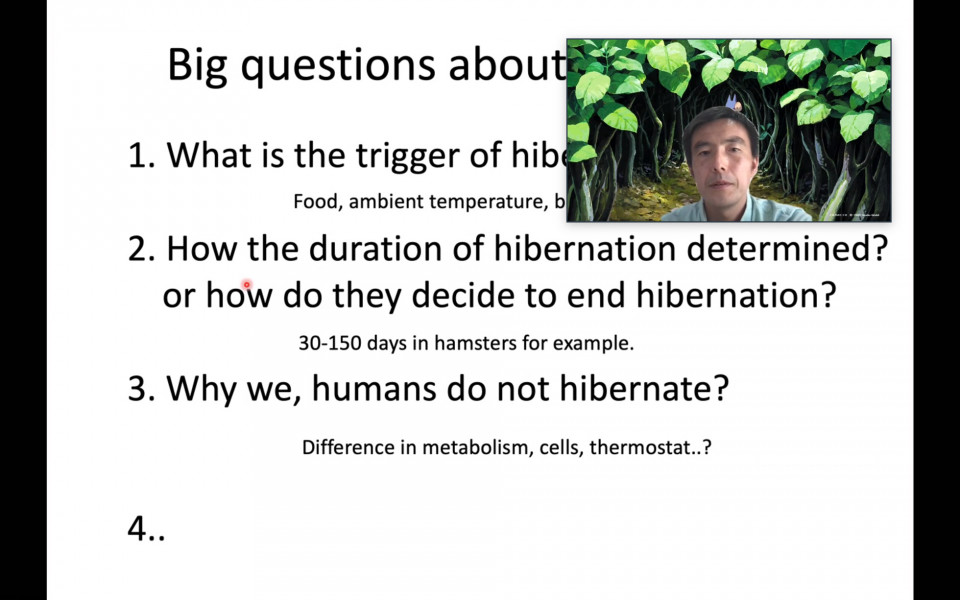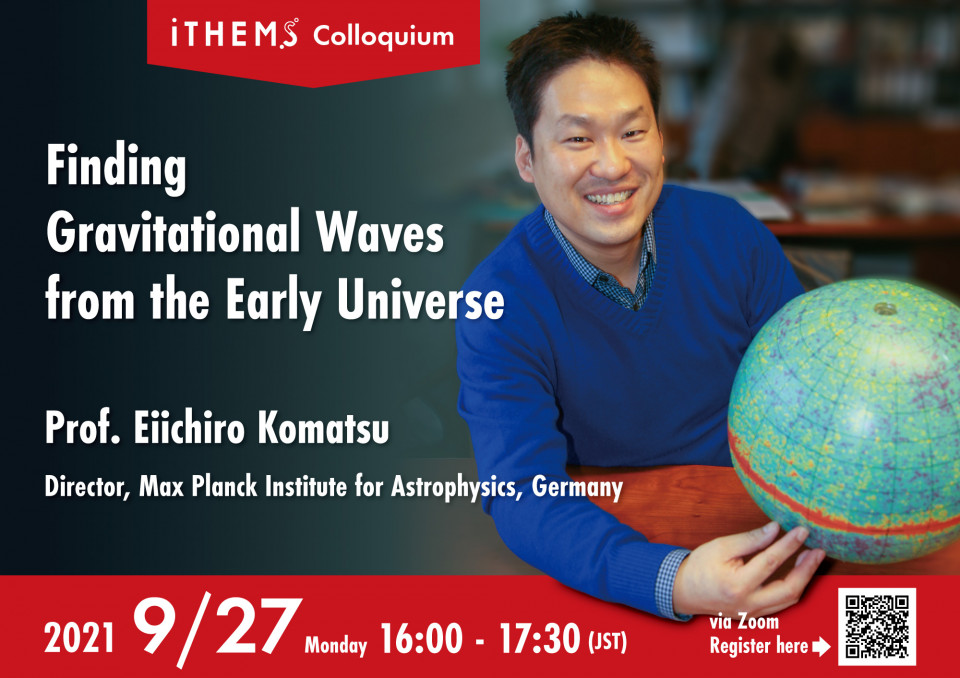Volume 164
Back to Newsletter List
Event Schedule
Events for the 2nd week of September 2021
2021-09-02
Friday, September 10, 12:30- Coffee Meeting
Friday, September 10, 13:30- NEW WG Seminar
Hot Topic
RIKEN-Vancouver Joint Workshop on Quantum Computing was held on August 24-25, 2021
2021-08-27
RIKEN-Vancouver Joint Workshop on Quantum Computing was held online on August 24-25. The main aim of this workshop is that the quantum people in RIKEN (iTHEMS and RQC) and Vancouver (Quantum BC) get together online to discuss scientific activities and explore future collaborations. There were altogether 164 registrations (90 from Japan, 62 from Canada and 12 from other countries). 12 scientific talks were presented together with 3 introduction to iTHEMS, RQC and Quantum BC. From iTHEMS, Jason Chang, Etsuko Itou, and Takumi Doi gave talks respectively on the Schroedinger equation, the U(1) gauge theory and combinatorial optimization. After each session, there were one-hour breakout sessions, so that people can ask further questions to the speakers, which worked very well. The workshop was an excellent first step toward a close tie between RIKEN quantum activities and Vancouver quantum activities.
RIKEN-Vancouver Joint Workshop on Quantum Computing
August 24 (Tue) - 25 (Wed) 2021
Press Release
Supercomputer Predicts Fascinating New Particle Charmed Di-Omega - A new page toward solving the puzzle of the 6-quark states has been added -
2021-08-31
An international collaboration including Takuya Sugiura (Postdoctoral Researcher, iTHEMS) , Tetsuo Hatsuda (Program Director, iTHEMS), and Takumi Doi (Senior Research Scientist, Quantum Hadron Physics Laboratory, RNC) has theoretically predicted the existence of a new particle called Charmed Di-Omega which consists of six charm quarks.
To read more, please see the related link (in Japanese).
Reference
- Yan Lyu, Hui Tong, Takuya Sugiura, Sinya Aoki, Takumi Doi, Tetsuo Hatsuda, Jie Meng, and Takaya Miyamoto, Dibaryon with Highest Charm Number near Unitarity from Lattice QCD, Phys. Rev. Lett. 127, 072003 (2021), doi: 10.1103/PhysRevLett.127.072003
Seminar Report
iTHEMS Biology Seminar by Dr. Gen Kurosawa on August 26, 2021
2021-08-30
During this covid-19 crisis, we check our body temperature (Tb) every day since Tb is essential variable of our body. In fact, some organisms like humans try to keep Tb constant, but some other organisms chose completely different strategies, including hibernation (冬眠). On August 26, I talked about hibernation at the iTHEMS Biology Seminar. Hibernation is a strategy for the organisms, including a primate to survive in a severe season with limited food and water availability. Although there have been a lot of studies about hibernation since the era of Aristotle, fundamental problems of hibernation remain unknown. Recently, we started to investigate mathematically body temperature profile of hibernating hamsters. During hibernation, the organisms drastically decrease their basal metabolisms, drop their body temperature (Tb) more than 10 degree, and become immobile. Mysteriously, Tb during hibernation does not remain constant at very low value, but greatly fluctuates with inconstant period of several days. At the seminar, I showed that a simple model can reproduce well and forecast Tb data during hibernation. Thankfully, there were a lot of questions and suggestions about the method of time-series analysis, hibernating species, and so on which are precious to me. This study is the collaboration with Prof. Yoshifumi Yamaguchi at Institute of Low Temperature Science, Hokkaido Univ and Shingo Gibo at iTHEMS. I’m really enjoying this research. I am happy if the audiences enjoyed the seminar and forgot about the heat. Thanks!
Mathematical analysis of body temperature fluctuation during hibernation
August 26 (Thu) 10:00 - 11:00, 2021
Upcoming Events
Seminar
ABBL-iTHEMS Joint Astro Seminar
The Polarised ring of the Supermassive Black Hole in M87: EHT observations and theoretical modeling
September 3 (Fri) 14:00 - 16:00, 2021
Yosuke Mizuno (T.D. Lee Fellow / Associate Professor, Tsung-Dao Lee Institute, Shanghai Jiao Tong University, China)
The Event Horizon Telescope has mapped the central compact radio source of the elliptical galaxy M87 at 1.3 mm with unprecedented angular resolution. These images show a prominent ring with a diameter of ~40 micro-arcsecond, consistent with the size and shape of the lensed photon orbit encircling the “shadow” of a supermassive black hole. Recently EHT has provided new images of the polarised emission around the central black hole in M87 on event-horizon scale. This polarised synchrotron emission probes the structure of magnetic fields and the plasma properties near the black hole. We found that the net azimuthal linear polarisation pattern may result from organised, poloidal magnetic fields in the emission region. In a quantitative comparison with a large simulated polarimetric image library, we found that magnetically arrested accretion disks are favoured to explain polarimetric EHT observations. In this talk, I also briefly discuss about a new modelling study of M87 jets in the collimation and acceleration region.
Venue: via Zoom
Event Official Language: English
Seminar
NEW WG Seminar
Towards a description of amorphous solids and viscoelastic materials using effective field theory and holographic methods
September 10 (Fri) 13:30 - 15:00, 2021
Matteo Baggioli (Associate Professor, School of Physics and Astronomy, Shanghai Jiao Tong University, China)
Among the most ubiquitous phases of matter, gases and crystalline solids are definitely the simplest to be described. Their physics is indeed almost entirely textbooks material and it can be summarized within the elegant frameworks of kinetic theory and Debye theory. Liquids and specially viscoelastic systems and amorphous materials (e.g. glasses) exhibit a much richer and complex dynamics with provides a large set of fundamental and unresolved physical questions. Given the tremendous microscopic complexity of these systems, which is manifest in a large landscape of scales and anomalous behaviours, the effective field theory (EFT) paradigm of isolating only a few, but fundamental, information could provide a winning approach. This talk is based on the simple, but indeed extremely difficult, question of whether these phases of matter can be distinguished, classified and understood using emergent and/or fundamental symmetry principles as in their ordered crystal counterpart. More precisely, we will combine EFTs, hydrodynamics and holographic methods to tackle the above question. I will present the most recent developments in this direction and I will discuss with you the most important open questions and avenues to explore in the near future.
Venue: via Zoom
Event Official Language: English
Seminar
NEW WG Seminar
High-harmonic generation in strongly correlated systems
September 15 (Wed) 13:30 - 15:00, 2021
Yuta Murakami (Assistant Professor, School of Science, Tokyo Institute of Technology)
High-harmonic generation (HHG) is an intriguing nonlinear phenomenon induced by a strong electric field. It has been originally observed and studied in atomic and molecular gases, and is used in attosecond laser sources as well as spectroscopies. An observation of HHG in semiconductors expanded the scope of this field to condensed matters [1]. The HHG in condensed matters is attracting interests since it may be used as new laser sources and/or as powerful tools to detect band information such as the Berry curvatures. Recently, further exploration of the HHG in condensed matters are carried out in various other systems than semiconductors.
In this talk, we introduce our recent theoretical efforts on the HHG in strongly correlated systems [2,3,4]. In contract to semiconductors, the charge carriers are not normal fermions, which makes HHG in strongly correlated systems unclear. Using the dynamical-mean field theory and the infinite time-evolving block decimation for the Hubbard model, we reveal the HHG features in the Mott insulators. Firstly, we reveal that the origin of the HHG in the Mott insulator is the recombination of doublons (doubly occupied sites) and holons (no electron site). Then, we show that the HHG feature qualitatively changes depending on the field strength due to the change of mobility of charge carriers, and discuss that the HHG directly reflects the dynamics of many body elemental excitations, which the single particle spectrum may miss. These results indicate that the HHG in Mott systems may be used as a spectroscopic tool for many body excitations. We also discuss the effects of spin dynamics on the HHG, which is a unique feature in strongly correlated systems.
References
- S. Ghimire, A. D. DiChiara, E. Sistrunk, P. Agostini, L. F. DiMauro, and D. A. Reis, Nat. Phys. 7, 138 (2011).
- Y. Murakami, M. Eckstein, and P. Werner, Phys. Rev. Lett. 121, 057405 (2018).
- M. Lysne, Y. Murakami, M. Schüler, and P. Werner, Phys. Rev. B 102, 081121 (2020).
- Y. Murakami, S. Takayoshi, A. Koga, and P. Werner, Phys. Rev. B 103, 035110 (2021).
Venue: via Zoom
Event Official Language: English
Colloquium
iTHEMS Colloquium
Finding Gravitational Waves from the Early Universe
September 27 (Mon) 16:00 - 17:30, 2021
Eiichiro Komatsu (Director, Max Planck Institute for Astrophysics, Germany)
The Cosmic Microwave Background (CMB) gives a photographic image of the Universe when it was still an “infant”. We have been using it to test our ideas about the origin of the Universe. The CMB research told us a remarkable story: the structure we see in our Universe such as galaxies, stars, planets, and eventually ourselves originated from tiny quantum fluctuations in the period of the early Universe called cosmic inflation. While we have accumulated strong evidence for this picture, the extraordinary claim requires extraordinary evidence. The last prediction of inflation that is yet to be confirmed is the existence of primordial gravitational waves whose wavelength can be as big as billions of light years. To this end we have proposed to JAXA a new satellite mission called LiteBIRD, whose primary scientific goal is to find signatures of gravitational waves in the polarisation of the CMB. In this presentation we describe physics of gravitational waves from inflation, and the LiteBIRD proposal.
Venue: via Zoom
Event Official Language: English
Paper of the Week
Week 1, September 2021
2021-09-02
Title: Anomaly-induced edge currents in hydrodynamics with parity anomaly
Author: Takuya Furusawa, Masaru Hongo
arXiv: http://arxiv.org/abs/2108.12192v1
Title: Near-threshold Spectrum from Uniformized Mittag-Leffler Expansion -Pole Structure of $Z(3900)$-
Author: Wren A. Yamada, Osamu Morimatsu, Toru Sato, Koichi Yazaki
arXiv: http://arxiv.org/abs/2108.11605v1
Title: Subregion Spectrum Form Factor via Pseudo Entropy
Author: Kanato Goto, Masahiro Nozaki, Kotaro Tamaoka
arXiv: http://arxiv.org/abs/2109.00372v1
If you would like to cancel your subscription or change your email address,
please let us know via our contact form.
Copyright © iTHEMS, RIKEN. All rights reserved.









